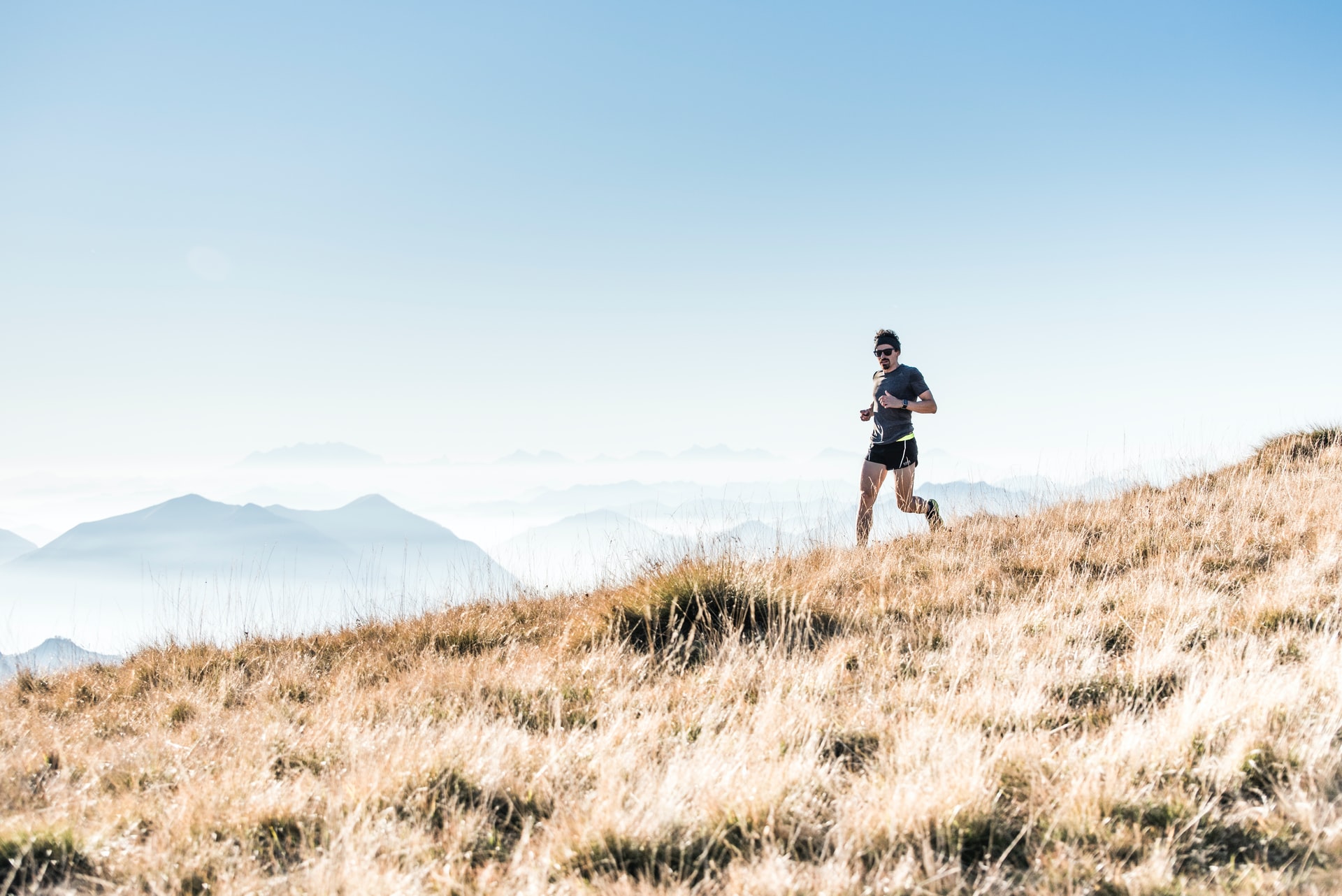The hills are alive with the sound of success! Here’s how a small incline can boost your running prowess.
Hate running uphill? Well, running 101 dictates that if you avoid hill training, you will never maximise on your running ability. ‘Hills build strength, endurance and speed, help runners recover quicker from other training sessions and also encourage better running technique,’ says Performance Team founder Andy Baddeley. ‘If you can sprint uphill, which necessitates a high knee lift, exaggerated arm drive and dorsiflexion (pulling your toes up behind you to shin-level when your foot is in the air) – you’ll have better form and, ultimately, be faster on flat ground.’ According to research in the International Journal of Sports Physiology and Performance, six weeks of high-intensity uphill interval running improves running economy (or how efficiently you run) and makes runners 2% faster over 5 km. Hills are a great way to build a shapely lower half – data reveals that runners make greater use of their quads, calves and bum muscles when running uphill, compared to when running on flat ground.
MENTAL MATTERS
Loops around the block. Park circuits during lunch hour. Who hasn’t pushed through these dull-as-dishwater running sessions? That is why hills are such a natural revelation. ‘Including a few hills in your training route is an easy way to break up the monotony of a steady run or road intervals,’ confirms Andy. ‘It will really keep you feeling motivated.’
Andy adds that running on hills can also be a great way to boost your mental strength: ‘It can be a very powerful psychological tool. If you can complete a hill effort, turn around and head back uphill before you feel ready, you’ll realise that, even when you are tired, you can still run hard.’
And even though running up and down this hill may make you yawn, it’s a very practical way to train. Why? Because this kind of workout can be performed in a set location, minimising the time spent training at a lower intensity and maximising on high-intensity, fat-burning efforts. It can be done with children or dogs too, as you will be in one place so you can keep an eye on them. And if you are concerned about how safe you are running alone, you can even bring a friend or partner along to be your timekeeper. Surprisingly, it can be a really satisfying way to spend time together.
TOTAL TECHNIQUE
To harness all of the benefits of hill training, run with good form. ‘A common mistake runners make is to choose a hill that is too steep or rough, which means running with poor technique,’ cautions Andy. ‘Find a hill with a good surface that has sections with varying gradients – you don’t want to be worrying about where you’re putting your feet. I find it effective to use a hill with a flatter section at the start to help build momentum.’ Follow these form tips to get the technical skills right:
Lean forward from your ankles, not the waist. You want to aim your body a bit towards the hill.
Slow it down. Work on pushing off from the ground and driving your legs uphill with good technique before going for all-out speed.
Look ahead. Hunching forward and looking at your feet could limit how much air you get into your lungs.
Move your legs quickly. The goal should be to have a higher cadence (steps per minute) than you’d have on flat ground.
Use your arms. Get those arms moving and your legs will follow. Don’t forget to use them to power your body uphill.
SMART SESSIONS
Science confirms it – hill training can make a real difference to your personal-best running times. Try adding these sessions to your weekly routine, aiming to train on hills once or twice a week.
KENYAN HILLS
Kenyan hills are a great form of running to do to test your downhill running ability. Simply find a quiet road, or off-road hill, and run repeats of varying lengths. Named after the type of training done by Kenya’s athletes, Kenyan hills involve running up and down the hill at the identical pace (think: two minutes up; two minutes down). Hold back slightly on the uphill to enable you to run back down at an even speed. You don’t slow down on the downhill, so your heart rate will stay elevated for the entire workout. Tough.
OFF-ROAD ROUTE
Take your training off-road. Map a hilly route on footpaths and park trails. The undulating surface of the trail will make use of a multitude of small stabilising muscles that road running doesn’t require; plus, rolling ground demands you use balancing skills that really hone your core. Grab a pair of grippy trainers and run the route at a steady pace – even when you’re running up a hill – from start to finish.
THRESHOLD REPS
Incorporate hill repetitions with threshold efforts (these are sustained aerobic efforts done at a moderate but constant pace) to really test your endurance. Try running for 10 minutes on flat ground at a steady pace. Then, recover for three minutes. Finally, run five lots of 45-second hills, jogging back down too. Repeat the whole thing once more. The second round will be much tougher, understandably, because you will be running on tired legs.
Words: Sarah Ivory | Photography: Unsplash





